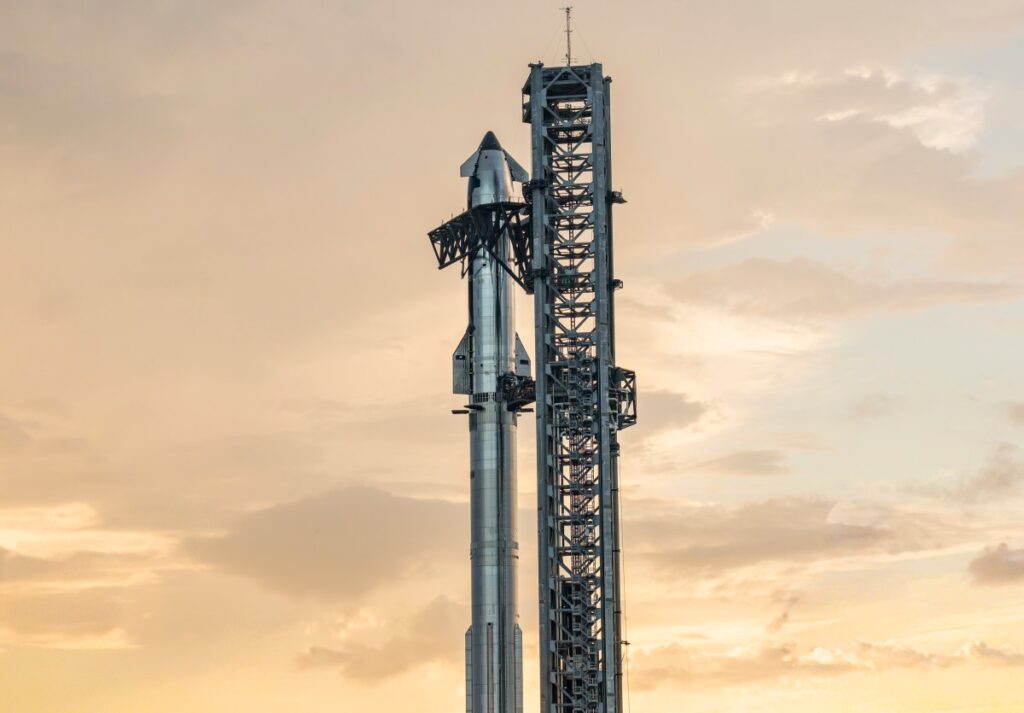SpaceX’s massive Starship rocket successfully completed its tenth test flight on Tuesday evening, marking a significant leap forward for the program. After two earlier scrubs this week, the 403-foot vehicle lifted off from Starbase, SpaceX’s launch facility and recently incorporated city, at 7:30 pm ET. The rocket ascended using 33 methane-fueled Raptor engines before separating around three minutes into the flight.
The mission saw the Super Heavy booster test a new maneuver during its descent. Engineers intentionally shut down the engines used for landing and switched to backup engines, simulating a failure scenario. The test went as planned, with the 232-foot-tall booster making a controlled splashdown in the Gulf of Mexico. This was a crucial step in understanding the booster’s performance under emergency conditions.
Meanwhile, the upper stage, also referred to as Starship, reached space and achieved another milestone by opening its Pez-style payload doors for the first time during a Starship mission. The vehicle successfully released eight Starlink mass-simulator satellites, a capability SpaceX had previously struggled to demonstrate. Following the deployment, the upper stage re-lit one of its Raptor engines in space before being guided toward the Indian Ocean, where it splashed down. Unfortunately, the vehicle tipped over and exploded shortly after impact.
During its descent, the exterior of the Starship was exposed to extreme heat, providing a critical test for its upgraded thermal-protection system. SpaceX also conducted several experiments, including removing tiles from parts of the vehicle to assess its “skin” during reentry, as well as testing a new metallic tile and an actively cooled tile. Most importantly, the upper stage completed the entire test without losing communication with SpaceX engineers, overcoming issues that plagued previous flights.
This mission represents a major breakthrough for SpaceX, which had repeatedly faced challenges with the Starship upper stage due to technical failures. These issues had raised concerns about the rocket’s readiness to land humans on the moon by mid-2027 for NASA, as well as its ability to deploy next-generation Starlink satellites. Tuesday’s success, however, signals progress and moves the program closer to these ambitious goals.
The test flight also highlighted the resilience and adaptability of the Starship program, which aims to eventually send humans and cargo to Mars. While SpaceX still faces several technical milestones, this mission brings the company one step closer to realizing its vision of interplanetary exploration.
TechCrunch Event
San Francisco | October 27-29, 2025
Source: https://techcrunch.com/2025/08/26/spacex-notches-major-wins-during-tenth-starship-test/


